
Fourth and final big collection of posts from this year’s Instagram series (the first one is here, the second here, the third here), which will exist on this blog after I delete it from socials on 1/1/24.
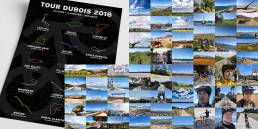
Canon Fodder Week 39 is for the so-called “Tour DuBois,” a side-quest for my larger “Keir By Bike” exercise routine. By 2018 I’d been biking regularly for 5 years, but I’d also suffered a (probably unrelated) strange upper arm blood clot in fall 2017, which kept me off the bike for 10 days, and kept me on thinners for years after. I needed to psych myself back into “I can still do this” mental shape, but that was a bigger lift than expected. My solution involved variety; since zipping around Ventura was getting boring, I drove to 14 locations in 4 SoCal counties (Ventura, SB, LA, OC) and racked up around 20 miles per ride in each place. Overall it went great, so in 2019 I tried again in places I hadn’t hit yet, adding a 5th county (SLO) and going 40+ miles in a single ride for the first time since my 40th birthday 3 years earlier. I documented each ride with my trademark basic biking snapshots, but also had some fun with the route lines, creating a (still unprinted) poster of the first year’s trips.
Quarantine halted travel in 2020, but I still logged lots of long rides locally, and the “tour” definition had already been evolving fast. It now meant “anything big and/or noteworthy,” since my biggest mileage totals happened closer to home. In 2021 I went back on the road both north (Half Moon Bay) and south (Oceanside), adding 2 more counties (for 7 total) and scores of 20+ mile rides. That held for 2022 (21 such rides), but fell off this year (only 5). However, for 2022-23 I went on more total rides, just shorter ones, and Em biked with me on many, using her new orange steed. My white-whale ride is still out there—a 50+ mile monster that involves going up and back on either the LA River or San Gabriel river trails, but that’ll depend on several other things falling into place that may or may not happen. But after 10+ years and 10,000+ total miles, as long as I’m healthy and the Red Giant is ready, I’ll keep going (and keep posting 3/4 sky snaps). Stay tuned.

Canon Fodder Week 40: Map Art! I’m not sure why it took me decades to become a freelance map artist, since (as many of you know) I’d been doing that as a hobby forever, but around age 40 I hit a tipping point. I’d done map design work before as part of bigger projects, but that was irregular and insufficient. Before leaving Oniracom I’d tried and failed to break into “real” map design at cartography firms like Mapbox and Esri, but quickly realized that data-driven/GIS stuff was over my head and not my bag. Starting Tight Ship for event branding meant map art remained a hobby for the moment, which was fine because I had an outlet for it already: my dubious quantity-over-quality creativity-social-posting that began with “Design A Song.” However, sometimes good things emerged along with the bad and ugly during four specific series: “50+2” (2016), “March Mapness” (2018), “Homeworlds” (2019) and “Found Islands” (2021). Since much of this stuff happened in the last decade with most of you watching, I’ve left the details on project pages via profile link and won’t belabor it.
However I will say it was all worth it to achieve one major creative breakthrough: found textures for map art. I’m not the first or only person to do that, but for me it’s worked great as a launchpad for everything else hobby-wise—from fantasy cartography to freelance map design (more on both of those later), when business-wise I finally put into practice what I learned from all those years at agencies and partnerships. Weird Flexes and Wild Trivia: My obliviously face-planty Mapbox and Esri applications weirdly echoed an episode from 2001-ish, when I briefly dabbled with professional audio engineering only to bail on that and form a second band instead. Songwriting and playing was (and still is) more fun than recording. Map art is (for me) more fun than dynamic GIS. Do what’s fun for you, folks. It’s not a very original take, but that’s my only real advice about creativity.

Canon Fodder Week 41: Tight Ship projects. Like I said a few weeks ago, most of the actual client work Julia and I did at Tight Ship felt like a second-tier priority—at least as far as business admin, self-promo, and sales taking up most of our time. Fighting the War To Make People Care was often interesting but mostly a failure; revenue was always slow and we ended up compromising this or that self-imposed rule when accepting work, so we still kinda weren’t choosing our clients freely. That doesn’t mean there was only bad or uninspiring work, and for me personally there were some good notches in the belt: the SB Food Bank annual report (carried over from Oniracom) was our first job, the Startup Mashup branding was a good tie-in with my then-AIGA-President-Guy duties, the ASR branding was a good collaboration, the P&C Trade Show booth was my first crack at that type of work (which went well), and doing some little things for SB High science teachers felt good too.
But then there was the big one that broke us: a year-long, massive, potentially lucrative job for an arguably problematic client I probably still can’t name (but whatever, the image is right there). We did good work (special thanks to Julia for starting it and Amaranthe Wolff for helping me print/mail it), got it approved, and *saw* lots of money on that one but only *made* about $5k on it—and by late 2019 that wasn’t enough to keep the ship afloat when quarantine shut down all events a few months later. Our vessel limped along all summer, but we mutually let it sink in September 2020. Between scuttling Tight Ship and allowing the AIGA SB chapter to move to SLO, I definitely made a proper bonfire out of my previous decade of professional expansion and learned I’m not really into marketing or business anymore. However, moving on to other things was healthy, and that meant freelance design (when it happened) and map art (mostly for fun), that still uses an admin process built on Tight Ship documents and structure. More on all that stuff in a few weeks.

Canon Fodder Week 42: A little filler here to put a bow on my pre-quarantine work with some quickie logo and style notes. Since ~2004 I’ve made scores of logos, but unlike many designers I’ve never been super-passionate about “branding” work. I can do visual identity well, but it’s never felt compelling. Also unlike many designers, I’m not gonna get snobby about type or logos. It always looks ridiculous, and I’m *done* with that silliness. However, I’ll never say “I don’t care about your logo” because aside from its condescending, reductive sanctimony, that view ignores that if you don’t assert your own identity (in any fashion), other people will do it for you, and the result will never be good for you. So as crassly-capitalistic or fear-based as it may sometimes seem, “branding” is important—even on a personal scale—and logos can be a first step for branding anything. My BBM&D-era logos were never used by clients (though the SB Symphony one was great), my Oniracom-era work was merely passable (with the Oni elephant a fine exception), and my Tight Ship-era stuff was definitely the best (two designer brains made for much better work).
I’ve done a bit while freelancing too (for Good Jobs First), but the only recent logo I love is my Keirtography “K” (because it took very little time). Style guides are different; though I’ve never gone gaga for corporate brand books (such as the ballyhooed NASA one), as a visual-and-verbal person I really respect well-planned overall visual identities that include messaging. I’ve only compiled four such collections, but I made the most of each, throwing everything I had at style guide projects for VSI (2011), Oniracom (2016), ASR (2018) and SBCC (2018). In lieu of Weird Flexes and Wild Trivia (because there’s too much to choose from with these logo jobs) I’ll preview what’s left in this series by saying: you know how “best-of” or “greatest hits” compilations can get padded with late-career self-indulgent work that usually only the artist and a few diehard fans care about? I’m totally gonna do that for the rest of 2023. Sorry/not sorry.
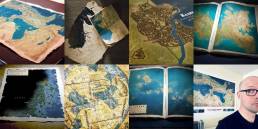
Canon Fodder Week 43: Fantasy Cartography. This series’ home stretch begins with the fruits of a huge creative breakthrough—making map art by digitally manipulating found textures. It was a key to finishing personal map projects that had been dormant for decades, and it came at the perfect time for me: when the world was shut down by quarantine, my business was failing, and my brother had roped me back into D&D after table-top roleplaying games had gone mega in recent years. It was an ideal time for relying on my own imagination, which I ended up doing like never before. That’s the shortest version of that story (for the longer one, see some process and portfolio pieces via my profile link). The result was helping my friends visualize their own game-worlds with unique, genre-agnostic cartography—and then doing the same for my own fictional planet. I made world-map posters, historical/political reference graphics, tactical-grid imagery, and even a traditional hobbit-style map.
I’ve only had one paying job of this type (the wider gaming community rarely enjoys corporate/organizational-level budgets), so it’s mostly remained a solo or tightly-collaborative passion project. However, there is no one way and no wrong way to do this, so it’s obsessively compelling and fun. It became even more so when world-building cultures, nations, and histories—plus designing individual characters (more on them later)—that populated these made-up places. The ultimate end-point was compiling all of my world’s maps and stories into a fictional gazetteer (more on that later too). Honor Roll: My planet Nua is mostly a bog-standard fantasy setting (except when it’s not), so making maps for “Worlds Of Aeos” by Bryn DuBois (Magic as deteriorated AI! Perma-storms protecting demigods! Sentient space stations! Dragons on the moon!) and “The Veiled Frontier” by Stephen Foster (Subverting a well-known setting! Mutant monstrosities! Music as language! Psychotropic consequences everywhere!) has certainly led to plenty of in-game Weird Flexes and Wild Trivia. More about all three campaigns in a few weeks as well.
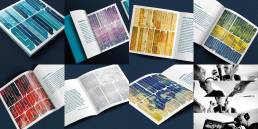
Canon Fodder Week 44: The “Shipping” EP. I’m not a real musician, but sometimes I play one on the internet, and 2020 was a good time to haul out the gear again. The seven songs on “Shipping” were my first new music in five years (though I based two of them on unused demos from 1999). I wrote all seven lyrics over those five years, during which (among other things) my town caught on fire, I endured a freakishly-perfect-storm medical emergency, I bailed on volunteering, and my first business launched, sailed, and sank. The EP’s title is an overly-elaborate pun-metaphor for design leadership, entrepreneurial partnership, and all the relationships involved with both. The “Shipping” songs are basically notes I wrote to myself saying “it’s ok to return to what you know to rely on and rebuild from.” I recorded everything at home to keep creative during quarantine. I sampled my bike, the wind, the ocean, and a few old recordings of friends, but I made most of the noise myself. I actually sang this time too, instead of doing the whispery-gravelly thing from my previous EP.
I released 1-2 tunes per month beginning in April 2020, and by August I had a fairly balanced mix of weird ambience and “real” songs, all of which felt much more brightly-lit than anything I’d done in about a decade. Full details about the project and tunes themselves are in a corresponding @mybandrockspod episode. I made the cover and booklet art (all of the slides in this post) from repurposed “Homeworlds” found-texture maps, with the song titles cut out with a fun typeface called “Fit.” Weird Flexes and Wild Trivia: Like many creative people in quarantine with too much time and absolutely no shame or self-awareness, I posted a few story-videos of what I was making (which won’t see daylight ever again). That may or may not have been a good idea, but it reflected the fact that I was really proud of what I’d recorded. In the years prior I thought I might have been done with music, and “Shipping” does feel like an ending of some sort. I still can’t put my finger on why, though, and obviously I wasn’t done with music. More about that next month!

Canon Fodder Week 45: Keirtography map projects. Is a job a “real” job if 1) it’s creativity-based, 2) it’s not full-time, 3) it’s low-paying, 4) it’s just as much passion as profession, and 5) the person holding that job custom-created it for themselves and is dreaming it up as they go along? I was hung up on all this stuff when my first business was failing, but then the world shut down and nothing mattered, so I stopped worrying and did what I wanted, which (among other things) was making this mappy side-hustle a reality. Keirtography started during Tight Ship’s final voyage with an awesomely perfect portmanteau-pun and a logo that only took 6 hours to make (so it was obviously Meant To Be).
It’s not complicated: I make static, simple, but professional-quality map illustrations for publications, locations, worldbuilding, and digital art projects, and I do it using corporate- or organization-level budgets (because I’m not an Etsy store). It’s not “real” cartography, but all I need it to be is Keirtography. It’s both a return to what I can do best and something new to build on, which is what I needed to figure out after understanding I wasn’t interested in being a business person. It’s only been 1-2 projects per year so far, but that (plus other freelance design work) is what I’ve learned I can handle to do consistently good work. The six big blips so far have been SBCC campus maps (2018, 2023), editorial map art for designExplorr/IDSA (2020), a computerized Boston for a sci-fi novel series (2021), Iron Curtain-era Europe for a memoir (2022), Florida’s national parks for the NPCA (2022), and a Wilmington NC-area welcome map (2023). As always, all details via profile link.
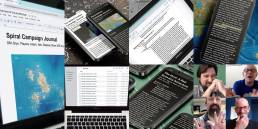
Canon Fodder Week 46: D&D campaign journals. Bit of filler here, but no less creative than anything else in this series. After marinating in Google Docs banality for a decade, I found something fun to use them for: the weekly recaps I wrote for my table-top role-playing group (which began with 3 and now is usually about 8 people) when we all dove back into D&D circa 2020-2021. Other than about 10 blog posts a year (which I guarantee have even fewer readers), this stuff is the only real writing I do anymore, and it’s for a very limited audience, but it’s super fun despite sometimes still being a good chunk of work. The idea is that after every 2-hour D&D session, one of the players (in this case me) makes a diary of what happened: what our characters did, where they are in the world, what’s happened in the plot, what goodies they’ve accrued, and (perhaps most important) the most epic one-liners delivered by any given player for their character. I’d take notes (or more recently, make a recording and whittle things down from its AI-transcription), compile the gist in a doc (with my usual pretentious flourishes) and make a quick weekly story our group can enjoy and refer to. It’s very in-jokey—something I’ve never liked in any other circumstance—but for these 8 people it’s a practical and fun way to keep track of our years-long games.
Lately it’s been tougher to maintain—like every tabletop group ever, especially when everyone’s over 40, we have trouble scheduling game sessions—but when your group has parents, teachers, and teachers who are parents, calendars get harder to fight than monsters. As the only one with “lenient” working hours, yours truly became the record-keeper. But it fits—in one campaign, I play a lore-chronicling bard and in another, a know-it-all cleric/cartographer—so I’m not really stretching much, and several of these journals have reached Russian-novel proportions in length if not quality. Anyway, the moral here is that creating for a small group is no less valid than commanding a stage or vast audience. Especially when everyone’s trying to crack each other up. Perhaps obvious, but always worth a reminder.
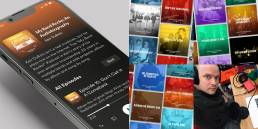
Canon Fodder Week 47: @mybandrockspod aka “My Band Rocks: An Audiobiography”. I’m not really podcast-host material. I do listen to many podcasts, but my first pass at hosting—5 episodes for Tight Ship interviewing fellow creative entrepreneurs—fizzled out as the company itself ended. The freeform Q&A and subsequent editing proved to be a bit much to take on while doing all the other “running a business” tasks. Several of my friends can do that very well, but it wasn’t for me. Until the last days of pre-vaccine lockdown, that is. I was hung up on not doing “real work”, going stir crazy waiting for The Jab, and apparently the best way for me to pass this time was narrate and edit an “audiobiography” of my (by then) 25-year-running music hobby. I read my own pompous liner-note essays from each album’s re-release PDF booklet, intertwining song samples as I went. It ended up being way more time and work than expected, but it kept my audio-editing skills sharp for the next time I worked on a proper music project (more on that later).
I think it felt manageable because “Season 1” had a set endpoint and (as I say too often) if I don’t tell this story, who will? So from January through March 2021 (12 straight Mondays) I posted a new 20-25-minute episode about a given album or time period: 4 for Mojo Wire albums (1997-2001), 4 for Honey White albums (2002-2007), and 4 for solo or other projects (2008-2020). They’re the same ones I link to for the album entries in *this* series, so that “reissue-recycle-repackage” vibe you’re sensing is real. It only goes up to 2020 (so doesn’t include this year’s mandocello project) but I didn’t (and still don’t) really feel compelled to make a “Season 2.” Bigger projects with new tools beckoned, and once freelance work ticked up a bit I was ready to move on.
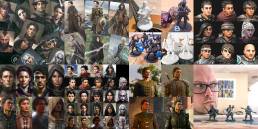
Canon Fodder Week 48: Character Creation. One of my more persistent 2020s hobbies has been making fictional characters for ongoing D&D campaigns with friends. I played a bit circa 30 years ago, and picked it up again recently because I love how these games let me make my own hero exactly how I want. I’m not stuck as Frodo or Link or whomever. Even better (since the hobby has exploded with popularity in the past decade) is working with all the new tools out there that help me visualize each of my characters down to granular levels of detail. Sadly my early-’90s-original sketches are long gone, so (along with Photoshop) tools like Heroforge, Midjourney, and even this year’s Baldur’s Gate 3 video game have been a big help (see posts about each via profile link). I can draw basic pen-and-ink portraits, but not well, so my first attempts were sloppy jalopies of other images, manipulated enough to make them “originals”, but not very good ones. Then I became an “old man playing with minis” thanks to Heroforge, which makes 3D-printed figures that, combined with Photoshop, made dramatic (if a bit cartoony) portraits.
I’m not totally sold on Midjourney and other so-called “AI art” apps, but combining what I’ve made with what they do (and adjusting AI’s *many* flaws substantially in Photoshop) worked well enough in MJ v3, and got great results in MJ v4. I was (and still am) happy with those, even after I got sucked into a video game for the first time in 30 years that let me do even more customization (and helped me endure Covid when it finally got me) on newer and different portraits. I’d already created my own world for them (more on that next week) but visualizing them for Baldur’s Gate 3 actually got very close to their Midjourney versions. This game is *frighteningly* addicting, whether I’m using my characters as world-saving action figures or (thanks to all the gear and dye options) as glorified dress-up dolls (slide 7). This probably isn’t “real” art—at least as far as design or illustration—but who cares? It’s certainly creativity.
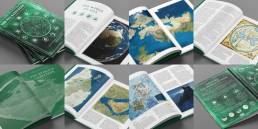
Canon Fodder Week 49: The Nua Gazetteer, Volume 1. “Hello my name is Keir, this is my gazetteer.” After two years of work and decades of worldbuilding before that, I self-published my own table-top-role-playing fantasy atlas in late 2022. The book collects made-up maps (plus swordy/sorcery vignettes and histories) I created and refined in recent years using my unique found texture map style, based on original designs I started ~30 years ago as a teenager. It’s my own synthesis of all the fantasy and sci-fi creativity I’ve ever enjoyed: old, new, famous, and obscure. The themes may not be original, but the mashup of details might be. I tackled everything for this project (check out the whole process: announcement, notes, digital and print release): worldbuilding, cartography, copywriting/editing, illustration, and design/layout. That’s not how it’s usually done, but that’s how I did it.
I didn’t go to all this trouble for a passion project, though (as personally and creatively fulfilling as that is). I did it to showcase my skills and have it ideally be a stepping stone to more similar work for other role-playing creators or game studios. That…hasn’t happened yet, but I’ve still got this thing to foster more game sessions and probably further companion volumes in the future. I’ve always had what I call a “hell, I can do better than THAT” reaction against lazy creativity. It can be snobby, but also catalytic, because it helps make something new of my own, instead of wasting time and energy griping about someone else’s work. That reactive-emulation impulse has served me well for other creativity in the past, from hobbies like songwriting or fiction to professional design projects. It can be a good spark for doing great work. It’s also a healthy way to mentally combat not only the real world’s myriad large-scale insanities, but also my own personal real-world freelance design feast-or-famine follies and stumblebum job hunt. It’s great fun to dream up amazing places and invite friends to come play in them.
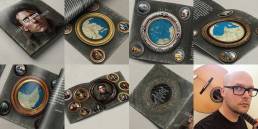
Canon Fodder Week 50: The “Lost Songs for Lost Singers” EP. Back in October of this year I released a third EP of seven solo tunes, my first new music since 2020. Years ago I acquired a custom mandocello (basically a big mandolin with low tones like a cello) and am slowly learning to play it by writing/recording songs in new or different ways than I did in the past (in this case, without a bass guitar). This approach allowed me to do something really different, lyric-wise. I decided these “fantastical folk” songs would be a good way for me to tell short stories via/about/with my beloved D&D bard character (instead of writing, say, an epic novel). I could get into all the convoluted details of this guy—it’s his portrait on the cover, and my gazetteer maps of the places he’s been make up the booklet artwork—but the songs are perfectly enjoyable without knowing any of that, so maybe he’ll be another story for another day.
“Lost Songs” took six months to produce, and like all my older recordings these are definitely amateur and more an accomplishment of careful editing than actual performance. Stream it on Bandcamp here, and see more info elsewhere (announcement, release). I don’t expect many people to care, but it’s always fun to release something that feels like creative growth after almost three decades of making music as a hobby, and especially by blending my other hobbies: maps, album art design, role-playing, and storytelling. Weird Flexes and Wild Trivia: Did I make a laughably basic video clip of my bard in Baldur’s Gate 3 strumming away to one of these tunes, with his companions looking bored and various other folks swaying ridiculously? Yes, yes I did. I’m so very sorry. Anyway, I’ll sum up this whole year-long series next week. Thanks for your patience and happy holidays, everyone.

Canon Fodder Week 51: Final series post to wrap up with a few projects that didn’t really fit in anywhere else. One I’m still really proud of is the cover art and audio mastering for my brother Bryn’s 2020 self-made EP of shantey-esque acoustic covers, “Hulled Between Wind and Water.” Thanks B, for asking me aboard to help that ship launch and sail. Also notable were (to date) three rush-job research-report print layouts for government watchdog nonprofit Good Jobs First, from 2021-2023. Thanks to Arlene Martinez from that org for being my most reliable freelance design client during this odd time in my creative career.
Less notable but still interesting: unfinished or unique map projects like 1) my stalled civic pride idea for a Ventura t-shirt using my 2018 hand-drawn neighborhood piece, 2) my in-the-moment, reactive, and insufficient memorials for Isla Vista and Thousand Oaks after mass shootings, 3) a weird 2019 dataviz map of California made from a decade of my bands’ live setlists, and 4) my one and only stab at GIS cartography: a 2013 renderings of MLB cities in their teams’ colors. Thanks for indulging “Keir’s year-long metaphorical boxed set of creativity.” It’ll stick around for another week and then vanish after the new year, banished to bloggy obscurity for all time. Still, it was a good (if laborious) reminder to myself that my talent has range and longevity beyond the stuff valued by conventional corporate résumés and portfolios. Our culture doesn’t care about creativity unless it makes money, which is criminally wrong but also an unfortunate reality. I think I’ve reached the acceptance stage, for better and worse, but that doesn’t mean I’ll ever be, like, an actuary. I promise that whatever comes next won’t be boring.